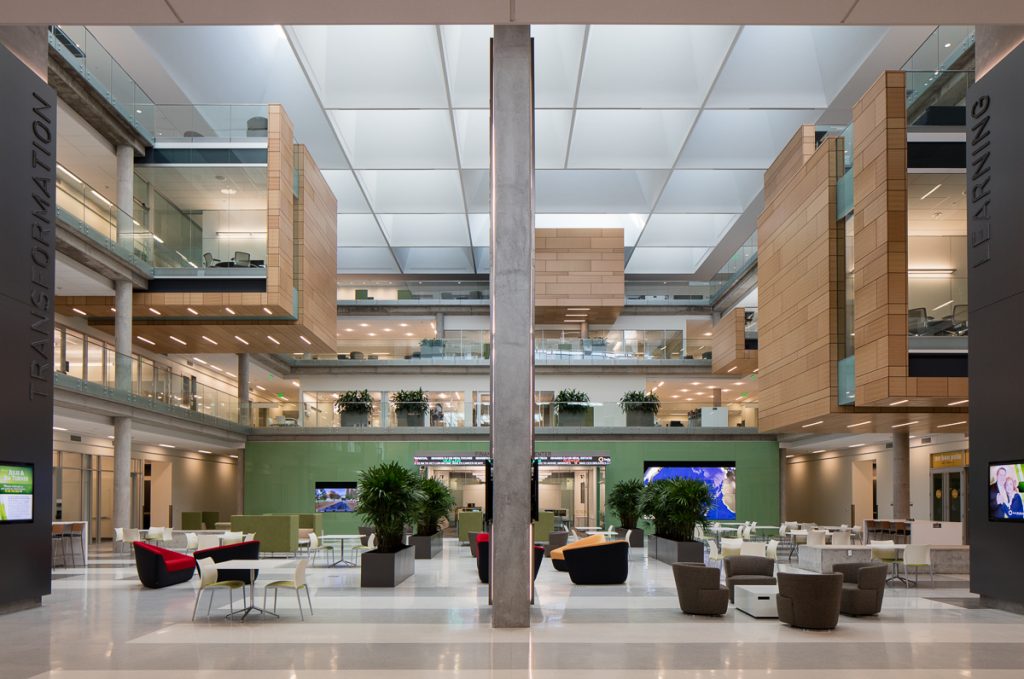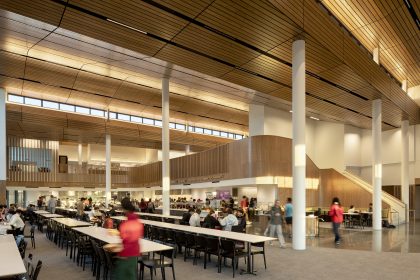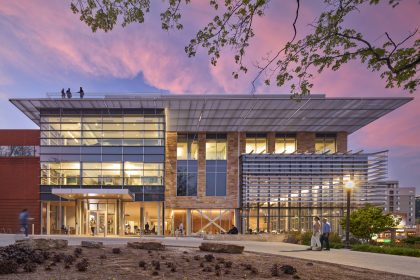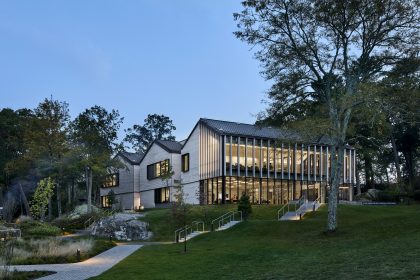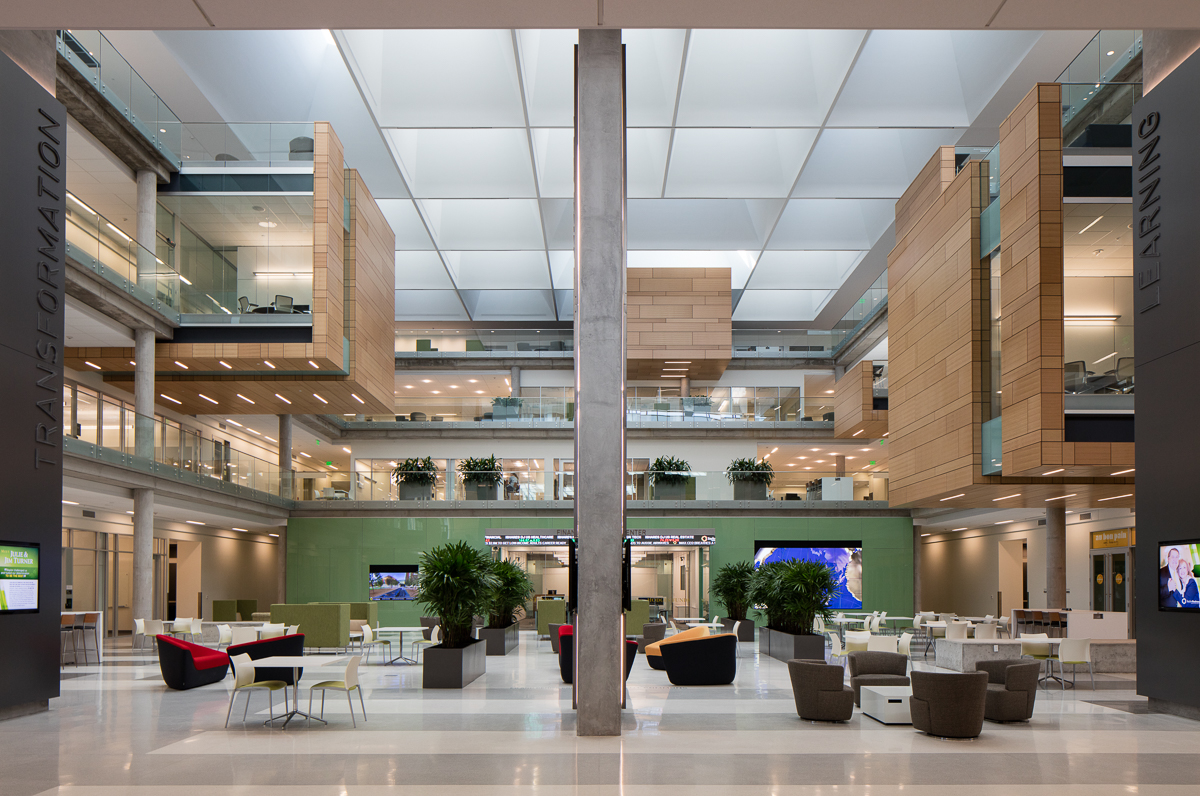
Baylor University Paul L. Foster Campus for Business and Innovation
Location
Waco, TX
Completed
2015
Size
285,000 SF
Owners
Baylor University
Architect
Overland Partners | Architects
Certifications
LEED Gold
Photographer
© Paul Bardagjy
Awards
A|L Light and Architecture Awards – Best Use of Daylighting
Design Team
Kera Lagios
The Paul L. Foster Campus for Business and Innovation building provides the thriving Hankamer School of Business at Baylor University with a leading-edge facility, which reflects the school’s dedication to creating the next generation of world-class business leaders.
